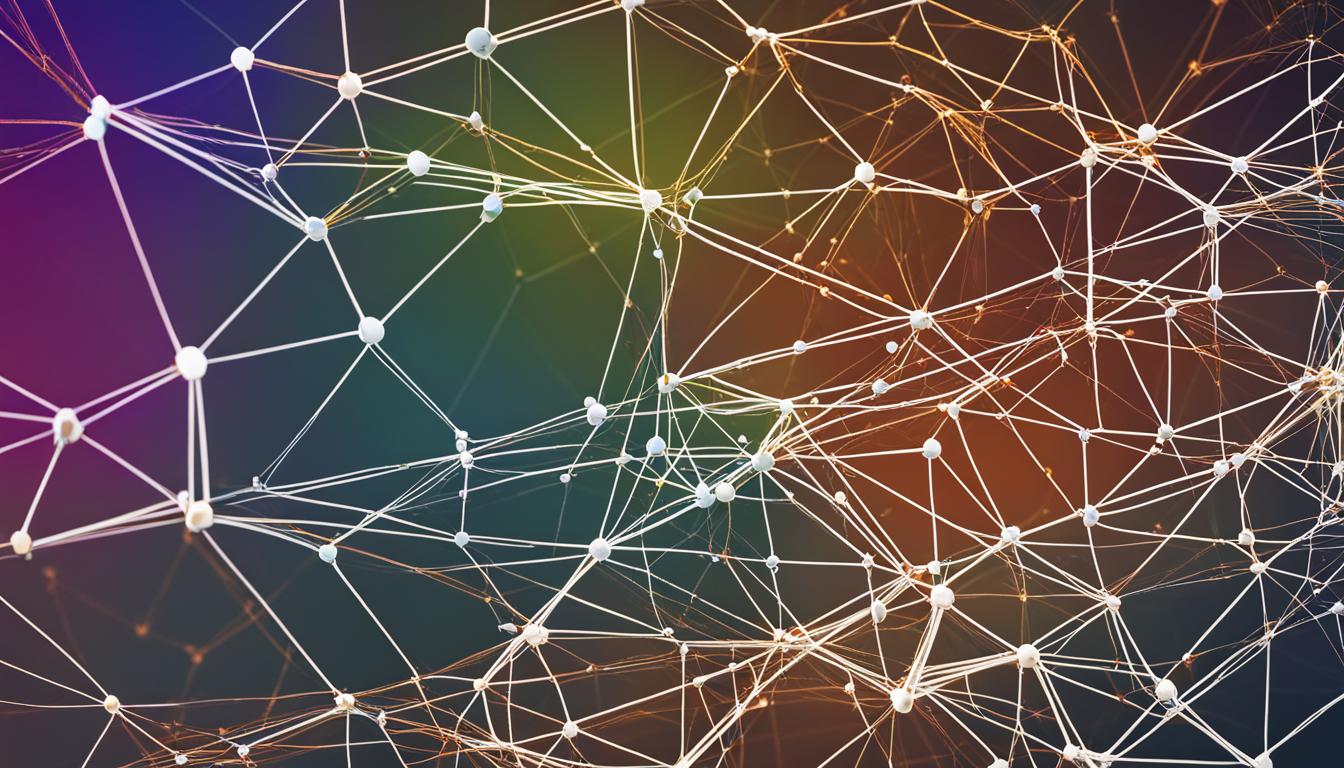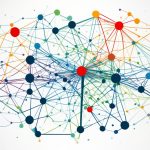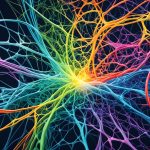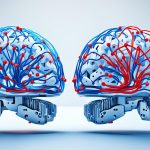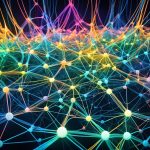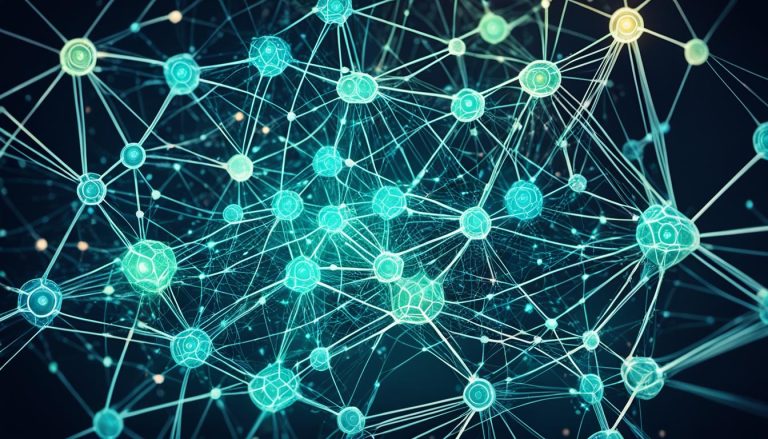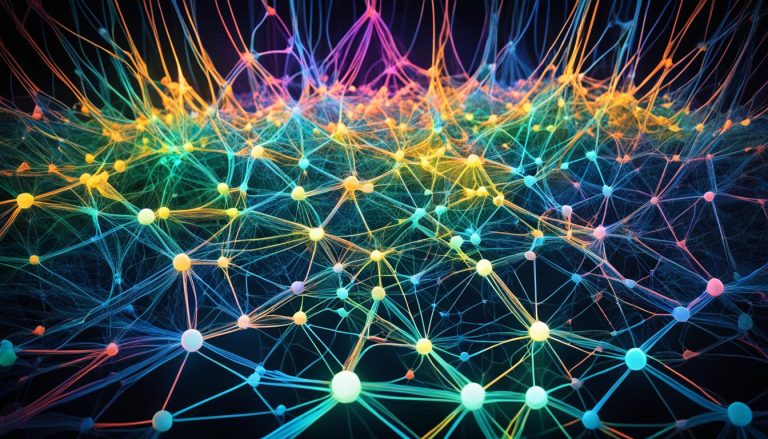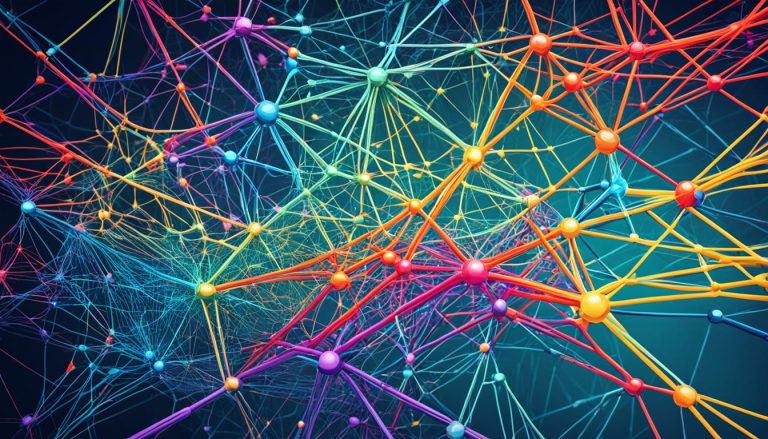Network modeling plays a crucial role in constructing efficient Software-Defined Networks (SDNs) and devising optimal routing strategies. However, existing techniques often fall short in accurately estimating performance metrics like delay and jitter. In this article, we introduce the concept of Graph Neural Networks (GNNs) and their application in network modeling and optimization. GNNs provide a powerful framework for understanding the intricate relationship between topology, routing, and input traffic, enabling more precise estimations of delay and jitter.
GNNs are specifically designed to learn and model information structured as graphs, making them versatile in handling arbitrary topologies, routing schemes, and varying traffic intensity. Through the use of GNNs, the accuracy of delay and jitter estimations can be significantly improved, even when dealing with previously unseen topologies, routing schemes, and traffic patterns.
Furthermore, this article showcases the potential of GNNs in network operations through various use-cases, such as routing optimization and generalization capabilities in unforeseen topologies and routing schemes. By leveraging the power of GNNs, network engineers can enhance the efficiency and performance of SDNs while optimizing resource allocation and achieving better quality of service.
Join us in exploring the transformative potential of GNNs in network modeling, optimization, and the evolution of Software-Defined Networks.
Introduction to Graph Neural Networks
Traditional machine learning models, like Convolutional Neural Networks (CNNs), excel at processing grid-like data but struggle with graph data. Graph Neural Networks (GNNs) offer a powerful framework for learning from graph-structured data. A graph is composed of nodes representing entities and edges denoting connections between them. GNNs can capture the complex relationships and structural information present in graphs, making them well-suited for tasks like node classification, graph classification, link prediction, and graph clustering. GNNs overcome the challenges faced by CNNs when processing graph data, such as arbitrary sizes, complex topologies, and unfixed node ordering.
Basics of Graph Neural Networks
Graph Neural Networks (GNNs) are powerful models designed to process and learn from graph-structured information. The core operations in GNNs revolve around graph convolution, linear transformations, and nonlinear activations. By leveraging these operations, GNNs propagate information across the graph by iteratively passing messages between nodes. This message passing enables GNNs to effectively learn representations of nodes and their relationships.
One fundamental task that GNNs excel at is node classification. In node classification, each node in the graph is assigned a label based on its features and the surrounding graph structure. By considering both the local features of the node and the overall graph connectivity, GNNs can accurately classify nodes even in complex graph data.
To reduce the dimensionality of graph data and capture the similarity between nodes, GNNs employ graph embedding techniques. These techniques transform the graph into a lower-dimensional space, which preserves the structural relationships and captures meaningful information about the nodes.
Graph Neural Networks leverage combinations of linear transformations and nonlinear activations to process and extract features from the graph data. Linear transformations are applied to each node’s features, capturing local patterns and relationships. Nonlinear activations introduce nonlinearity into the model, enabling GNNs to capture more complex and expressive graph representations.
“GNNs harness the power of graph convolution, linear transformations, and nonlinear activations to learn structured representations of graph data.”
By leveraging these core operations, GNNs have demonstrated their effectiveness in a wide range of applications, including social networks analysis, bioinformatics, and recommendation systems. They excel in domains where the data is naturally represented as graphs and require the modeling of complex relationships and dependencies.
Graph Convolution
Graph convolution is a key operation in GNNs that allows information to be propagated across the graph. During the graph convolution process, each node aggregates information from its neighbors and updates its own features accordingly. This enables the GNN to capture the structural relationships and dependencies present in the graph data. By iteratively applying graph convolution, GNNs can propagate information across the entire graph and learn representations that capture the global features of the graph.
Linear Transformations and Nonlinear Activations
Linear transformations and nonlinear activations are essential components of GNNs. Linear transformations apply a linear mapping to the features of each node, allowing the model to capture local patterns and relationships. Nonlinear activations introduce nonlinearity into the model, enabling GNNs to capture more complex and expressive representations of the graph data. The combination of linear transformations and nonlinear activations allows GNNs to learn rich and meaningful features from the graph structure.
To summarize, Graph Neural Networks leverage graph convolution, linear transformations, and nonlinear activations to effectively process and learn from graph-structured information. These core operations enable GNNs to propagate information across the graph, learn representations of nodes and their relationships, and perform tasks like node classification. The robustness and versatility of GNNs make them a powerful tool for analyzing and extracting insights from graph data in various domains.
| Core Operations | Function |
|---|---|
| Graph Convolution | Propagates information across the graph by iteratively passing messages between nodes. |
| Linear Transformations | Capture local patterns and relationships by applying linear mappings to node features. |
| Nonlinear Activations | Introduce nonlinearity into the model to capture complex and expressive graph representations. |
Applications of Graph Neural Networks
Graph Neural Networks (GNNs) have found applications in various domains due to their ability to capture complex relationships and dependencies in graph-structured data. One compelling application is traffic forecasting, where GNNs can model the dynamics of traffic flow in road networks.
By treating the traffic network as a spatial-temporal graph and leveraging techniques like Spatio-Temporal Graph Neural Networks (STGNNs), accurate predictions of traffic speed, volume, or density become possible.
This capability is crucial for traffic management, enabling authorities to make informed decisions about infrastructure development, improve traffic flow, and optimize commuting experiences.
Beyond traffic forecasting, GNNs possess versatility and can be applied to a wide range of tasks in various domains, including social networks, bioinformatics, and recommendation systems. Their ability to capture the underlying patterns and dependencies in graph-structured data makes them highly effective in analyzing and understanding complex systems.
Advantages of GNNs in Traffic Forecasting:
- GNNs can handle the spatiotemporal nature of traffic data, capturing how traffic conditions change over time and space.
- They can effectively model the complex relationships and dependencies within a road network, considering factors such as road connectivity, historical traffic patterns, and external factors like weather conditions and events.
- With their ability to generalize over different road network topologies and varying traffic intensities, GNNs can provide accurate predictions even in unseen scenarios.
- GNNs offer a holistic approach to traffic forecasting by considering the interactions between different road segments, enabling a more comprehensive understanding of traffic flow.
Ultimately, the integration of Graph Neural Networks in traffic forecasting has the potential to revolutionize transportation systems, enhancing efficiency, reducing congestion, and improving overall urban mobility.
To further illustrate the applications of GNNs, the table below presents a comparison of different techniques used in traffic forecasting:
| Technique | Advantages | Limitations |
|---|---|---|
| Graph Neural Networks (GNNs) | Accurate predictions of traffic conditions in real-time, ability to model complex relationships and dependencies in a road network | Requires large amounts of training data, computationally intensive |
| Traditional Statistical Methods | Simple and interpretable models, widely used in practice | May not capture complex spatial and temporal patterns, limited scalability |
| Machine Learning Regression Models | Capability to learn non-linear relationships, flexibility in feature engineering | Performance heavily dependent on feature selection and engineering, may struggle with capturing dependencies in large-scale networks |
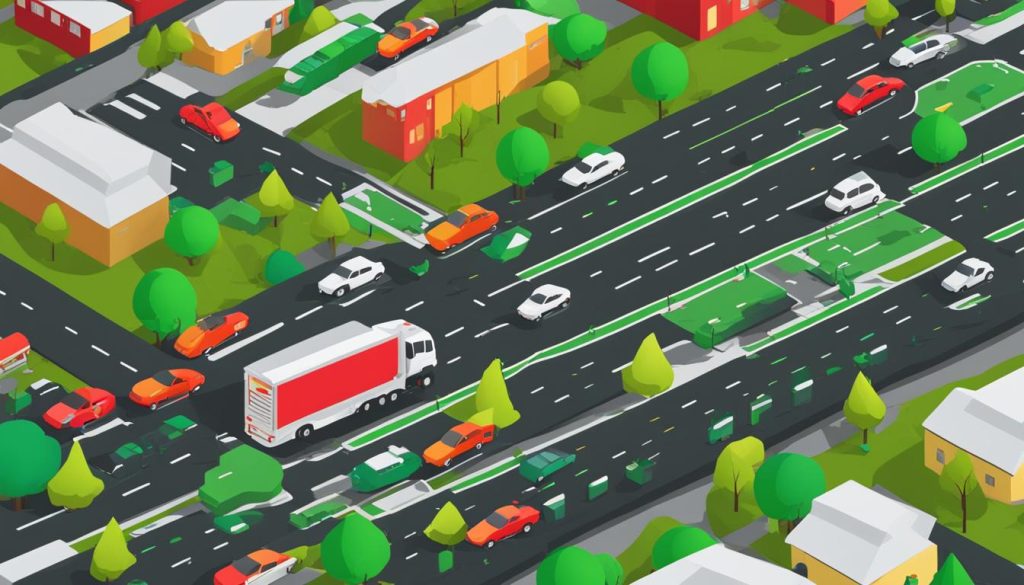
Graph Neural Networks for Intrusion Detection
In the field of Network Intrusion Detection Systems (NIDS), Graph Neural Networks (GNNs) have emerged as a powerful tool with great potential. Unlike existing ML-based NIDS that often treat and classify flows independently, GNNs are designed to capture the structural patterns of attacks by representing flows and their relationships as graphs. This allows GNNs to extract meaningful information about the flow patterns associated with various attacks, such as DDoS attacks, port scans, and network scans.
“GNNs enable the detection of complex structural flow patterns in NIDS, providing insights into the underlying attack strategies.”
A novel GNN model has been proposed, specifically designed to process and learn from graph-structured information in NIDS. This model achieves state-of-the-art results in NIDS datasets, surpassing traditional ML techniques. Moreover, the GNN model demonstrates remarkable robustness against common adversarial attacks, ensuring accurate detection even when flows are intentionally modified to avoid detection.
GNNs for Intrusion Detection combine the power of graph representation and machine learning algorithms to provide a more comprehensive and effective approach to network security. By leveraging GNNs’ ability to capture structural information and identify patterns, network administrators and security analysts can enhance their intrusion detection capabilities and better protect networks against various types of attacks.
Evaluating GNNs in Intrusion Detection
To evaluate the effectiveness and robustness of Graph Neural Networks in Intrusion Detection, extensive experiments have been conducted using the widely recognized CIC-IDS2017 dataset. The results showcase the remarkable performance of the GNN model in detecting a wide variety of attacks, rivaling state-of-the-art ML techniques for NIDS.
Additionally, the GNN-based NIDS has been rigorously tested against common adversarial attacks that deliberately modify flow features to evade detection. Unlike traditional ML techniques, the GNN-based NIDS maintains its accuracy and efficacy, even under these challenging attack scenarios.
These findings highlight the unprecedented level of robustness offered by Graph Neural Networks, showcasing their ability to enhance network security by accurately detecting attacks while withstanding adversarial manipulation.
GNNs are revolutionizing the field of Intrusion Detection, enabling the identification of complex attack patterns and an enhanced understanding of network vulnerabilities. As organizations face increasingly sophisticated cyber threats, deploying GNN-based NIDS can significantly strengthen network security defenses and safeguard critical assets.
Evaluating the Robustness of Graph Neural Networks in NIDS
To assess the robustness of the Graph Neural Network (GNN) model in the context of Network Intrusion Detection Systems (NIDS), a series of experiments was conducted using the CIC-IDS2017 dataset. The objective was to evaluate the performance and effectiveness of GNNs in detecting various types of attacks while maintaining a high level of accuracy and resilience.
The results of the experiments demonstrate that the GNN model achieves exceptional accuracy in identifying a wide range of attacks, comparable to state-of-the-art Machine Learning (ML) techniques used in NIDS. This highlights the capability of GNNs to effectively analyze and classify network flow data.
Furthermore, the GNN model was subjected to common adversarial attacks that purposely modify flow features to evade detection. Remarkably, even under these adversarial scenarios, the GNN-based NIDS maintains its accuracy level, while traditional ML techniques experience significant accuracy degradation. This showcases the unparalleled robustness offered by the GNN model in NIDS environments.

By employing Graph Neural Networks in NIDS, organizations can enhance their network security posture by leveraging the robustness and accuracy of these models. GNNs are capable of effectively analyzing and understanding complex network flow patterns, thereby improving the detection and mitigation of intrusions.
The ability of GNNs to withstand adversarial attacks is a significant advantage in the realm of network security. As cyber threats continue to evolve and become more sophisticated, having a NIDS based on GNNs can provide organizations with a competitive edge in safeguarding their networks and sensitive data.
Conclusion
Graph Neural Networks (GNNs) have proven to be a powerful tool for analyzing and detecting network intrusions in Network Intrusion Detection Systems (NIDS). The ability of GNNs to capture the complex flow patterns and dependencies between network flows has led to robust detection of attacks. The performance of the proposed GNN model has surpassed existing techniques, achieving state-of-the-art results in NIDS datasets.
One notable advantage of GNNs is their resilience against adversarial attacks. The GNN-based NIDS maintained its accuracy even when subjected to common adversarial attacks that aim to alter flow features and evade detection. This unparalleled robustness showcases the potential of GNNs in enhancing the effectiveness and security of NIDS.
Looking ahead, GNNs offer a promising approach for addressing the challenges of intrusion detection in real-world networks. Their ability to capture structural information and learn from graph-structured data opens new possibilities for improving the accuracy and efficiency of NIDS. By leveraging the power of GNNs, network administrators and security professionals can better defend against evolving threats and ensure the integrity and availability of their networks.
FAQ
What are Graph Neural Networks (GNNs)?
Graph Neural Networks (GNNs) are a powerful paradigm for learning from graph-structured data. They can capture complex relationships and dependencies in graphs, making them well-suited for tasks like node classification, graph classification, and link prediction.
What are the core operations in Graph Neural Networks?
The core operations in Graph Neural Networks revolve around graph convolutions, linear transformations, and nonlinear activations. GNNs propagate information across the graph by passing messages between nodes, allowing them to learn representations of nodes and their relationships.
What are the applications of Graph Neural Networks?
Graph Neural Networks have applications in various domains, including traffic forecasting, social networks, bioinformatics, and recommendation systems. They can capture complex relationships and dependencies in graph data, making them versatile for a wide range of tasks.
How can Graph Neural Networks enhance Network Intrusion Detection Systems (NIDS)?
Graph Neural Networks have shown the ability to capture complex flow patterns in NIDS. By representing flows and their relationships as graphs, GNNs can capture meaningful information about the structural flow patterns of attacks, leading to robust detection.
How robust are Graph Neural Networks in NIDS?
Experiments have shown that Graph Neural Networks achieve high accuracy in detecting a wide variety of attacks in NIDS datasets. They maintain their accuracy level even under common adversarial attacks that intentionally modify flow features, demonstrating their unprecedented level of robustness.

